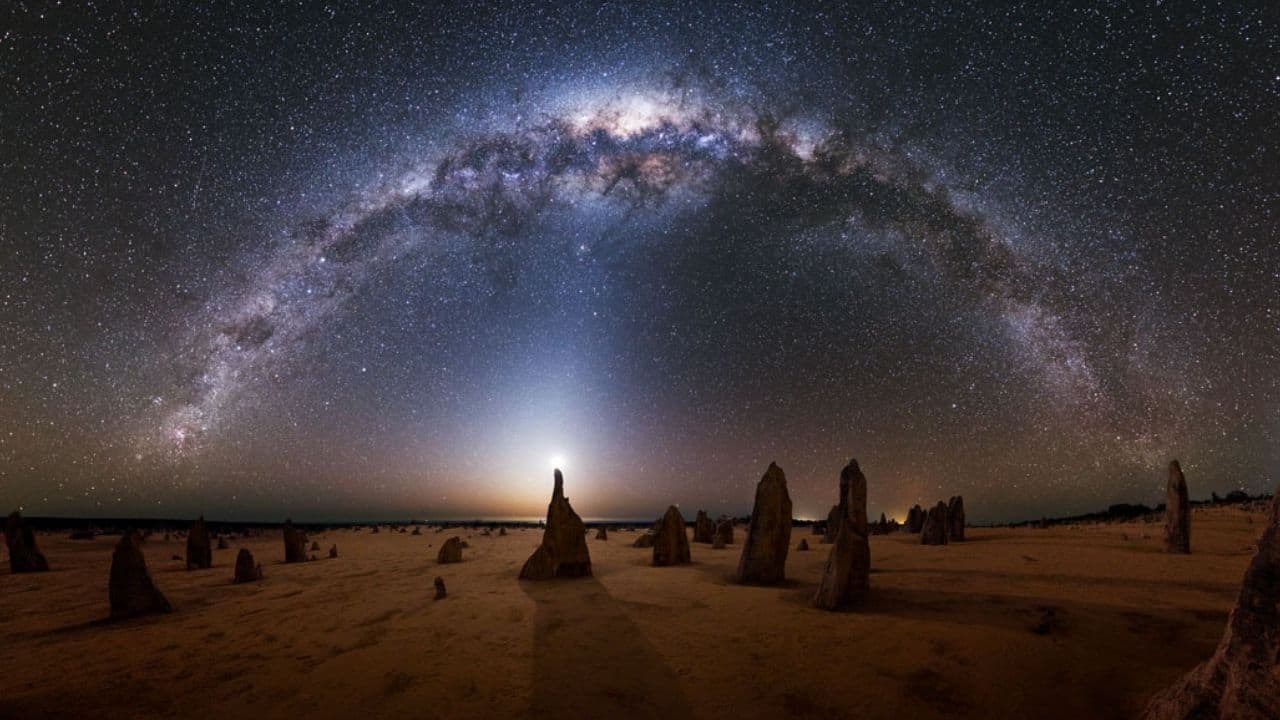
Milky Way over the Australian Pinnacles: A stunning panorama captures Australia’s Pinnacles beneath a crescent Moon, zodiacal light, and the glowing Milky Way, revealing a surreal blend of Earth’s beauty and cosmic wonders. (Image: Michael Goh/NASA)
Galactic Glow: The Milky Way glimmers above Earth’s night sky in this ISS photo, highlighting our galaxy’s vast star population and NASA’s mission to study the interstellar medium. (Image: NASA/JAXA)
Galaxies, Stars and Dust: Galactic cirrus clouds reflect the Milky Way’s starlight in Pegasus, while spiral galaxy NGC 7497 glows 60 million light-years away, mirroring our galaxy’s dust and star patterns. (Image: Robert Eder/NASA)
Milky Way and Exploding Meteor: The Perseid meteor shower, born from Comet Swift-Tuttle’s debris, will soon dazzle night skies, with bright streaks visible despite moonlight softening the celestial show. (Image: Andre van der Hoeven/NASA)
Fireflies, Meteors and Milky Way: The Perseid meteor shower, born from Comet Swift-Tuttle’s debris, will soon dazzle night skies, with bright streaks visible despite moonlight softening the celestial show. (Image: Daniel Korona/NASA)
Milky Way Through Otago Spires: The Milky Way’s bright core is perfectly framed between Otago’s rock spires, a rare sight requiring precise timing and location as Earth’s orbit shifts our galactic view. (Image: Kavan Chay/NASA)
A Milky Road to the Rubin Observatory: The Vera C. Rubin Observatory will scan the sky nightly, capturing shifting cosmic events like supernovas, asteroids, and comets while mapping our ever-evolving universe. (Image: NASA/NSF, DOE, Rubin Obs., Paulo Assunção Lago (Rubin Obs.))
Milky Way over Maunakea: The Vera C. Rubin Observatory will scan the sky nightly, capturing shifting cosmic events like supernovas, asteroids, and comets while mapping our ever-evolving universe. (Image: Marzena Rogozinska/NASA)
Gaia Reconstructs a Top View of our Galaxy: ESA’s Gaia mission mapped over a billion stars, revealing the Milky Way’s spiral arms, central bar, and dusty, star-filled disk from a top-down perspective. (Image: NASA/ESA, Gaia, DPAC, Stefan Payne-Wardenaar)
Gaia Reconstructs a Side View of our Galaxy: ESA’s Gaia mission reveals the Milky Way’s thin, curved disk, where our Sun resides, glowing with dark dust, bright blue stars, and red emission nebulas. (Image: NASA/ESA, Gaia, DPAC, Stefan Payne-Wardenaar)
Discover the latest Business News, Sensex, and Nifty updates. Obtain Personal Finance insights, tax queries, and expert opinions on Moneycontrol or download the Moneycontrol App to stay updated!









